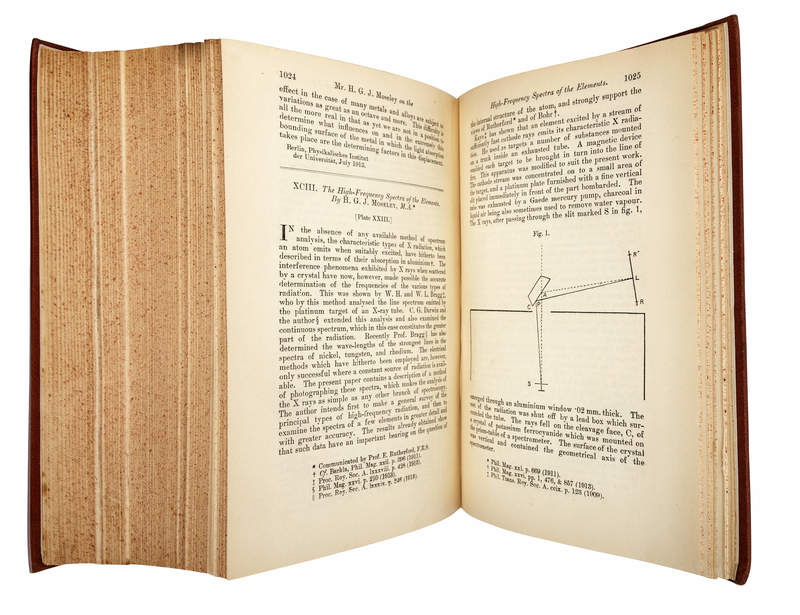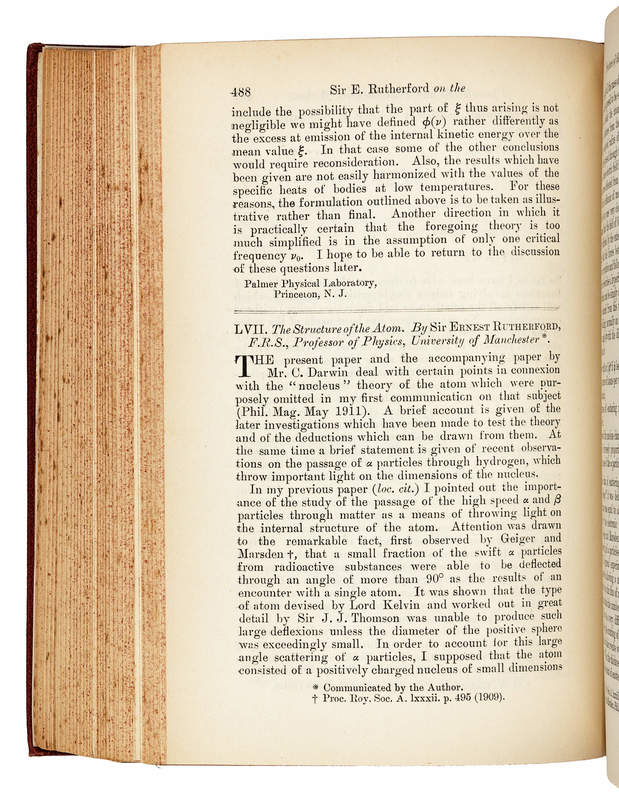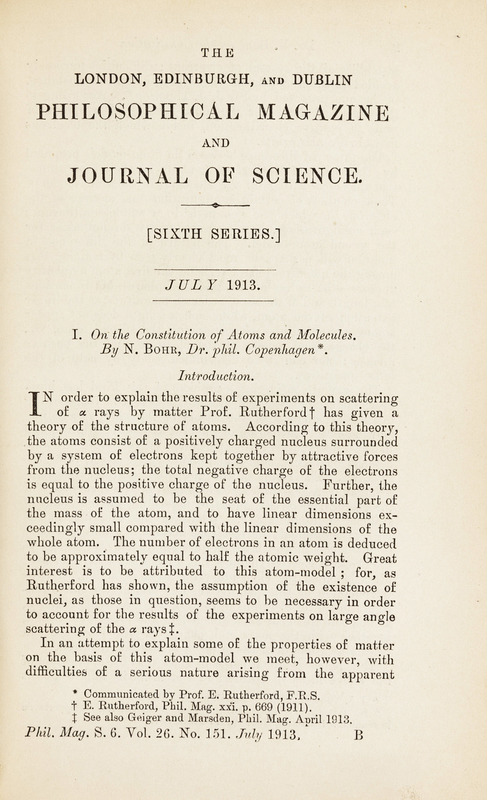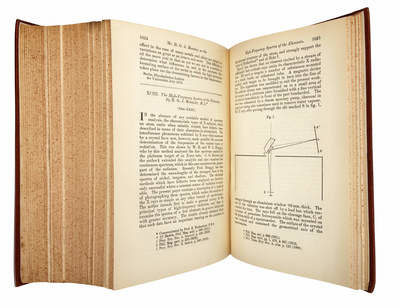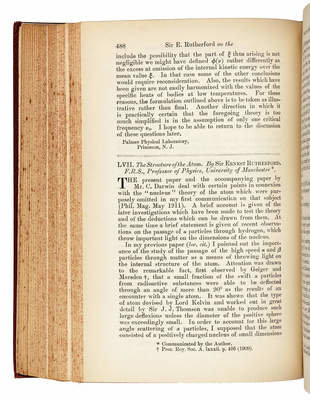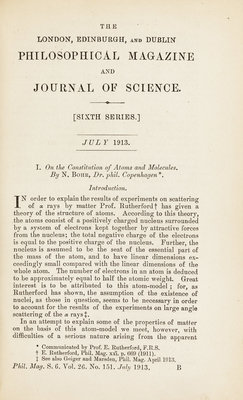Condition Report
Contact Information
Auction Specialist
Lot 4
BOHR, Niels (1885-1962). “On the Constitution of Atoms and Molecules.” In: The London, Edinburgh, and Dublin Philosophical. July, September, and November 1913. (3 parts). FIRST EDITION, journal issue. [With:] MOSELEY, Henry Gwyn Jeffreys (1887-1915). “The High-Frequency Spectra of the Elements.” (Bound with the above.) -- “High Frequency Spectra of the Elements, Part II.” (Bound separately). In: The London, Edinburgh, and Dublin Philosophical Magazine. December 1913, and April 1914. FIRST EDITION, journal issue.
Sale 714 - Library of a Midwestern Collector
Nov 5, 2019
10:00AM CT
Live / Chicago
Own a similar item?
Estimate
$5,000 -
7,000
Lot Description
BOHR, Niels (1885-1962). “On the Constitution of Atoms and Molecules.” In: The London, Edinburgh, and Dublin Philosophical Magazine, Sixth Series, Vol. 26, Nos. 151, 153, 155, pp. 1-25, 476-501, 857-875. London: Taylor & Francis, July, September, and November 1913. (3 parts).
FIRST EDITION, journal issue. "Bohr's three-part paper postulated the existence of stationary states of an atomic system whose behavior could be described using classical mechanics, while the transition of the system from one stationary state to another would represent a non-classical process accompanied by emission or absorption of one quantum of homogeneous radiation, the frequency of which was related to its energy by Planck's equation" (Norman 258).
[With:]
MOSELEY, Henry Gwyn Jeffreys (1887-1915). “The High-Frequency Spectra of the Elements.” (Bound with the above.) -- “High Frequency Spectra of the Elements, Part II.” (Bound separately). In: The London, Edinburgh, and Dublin Philosophical Magazine. Sixth Series, Vol. 26, No. 156, pp. 1024-1034; and Sixth series, Vol. 27, No. 160, pp. 703-713. London: Taylor and Francis, December 1913, and April 1914. (2 parts).
FIRST EDITION of Moseley’s introduction of the use of atomic number, rather than atomic mass, which provided a firm scientific foundation for the atomic table and fostered “the first quantum revolution” (Simmons, The Scientific 100, p.18). "Moseley, working under Rutherford at Manchester, used the method of X-ray spectroscopy devised by the Braggs to calculate variations in the wavelength of the rays emitted by each element. These he was able to arrange in a series according to the nuclear charge of each element... These figures Moseley called atomic numbers. He pointed out that they also represented a corresponding increase in extra- nuclear electrons and that it is the number and arrangement of these electrons rather than the atomic weight that determines the properties of an element. It was now possible to base the periodic table on a firm foundation, and to state with confidence that the number of elements up to uranium is limited to 92" (PMM 407). Norman 1559.
Together, 2 journals bound in 2 volumes, 8vo. With other plates and folding charts related to other articles. (Scant pale spotting to a few leaves.) Uniformly bound in modern maroon morocco gilt. The volumes comprise Volume 26, the Sixth Series, Nos. 151-156, July-December 1913 and Nos. 157-162, January-June 1914 of The London, Edinburgh, and Dublin Philosophical Magazine, and also include works by Charles Darwin, Ernest Rutherford, and J. J. Thomson.
